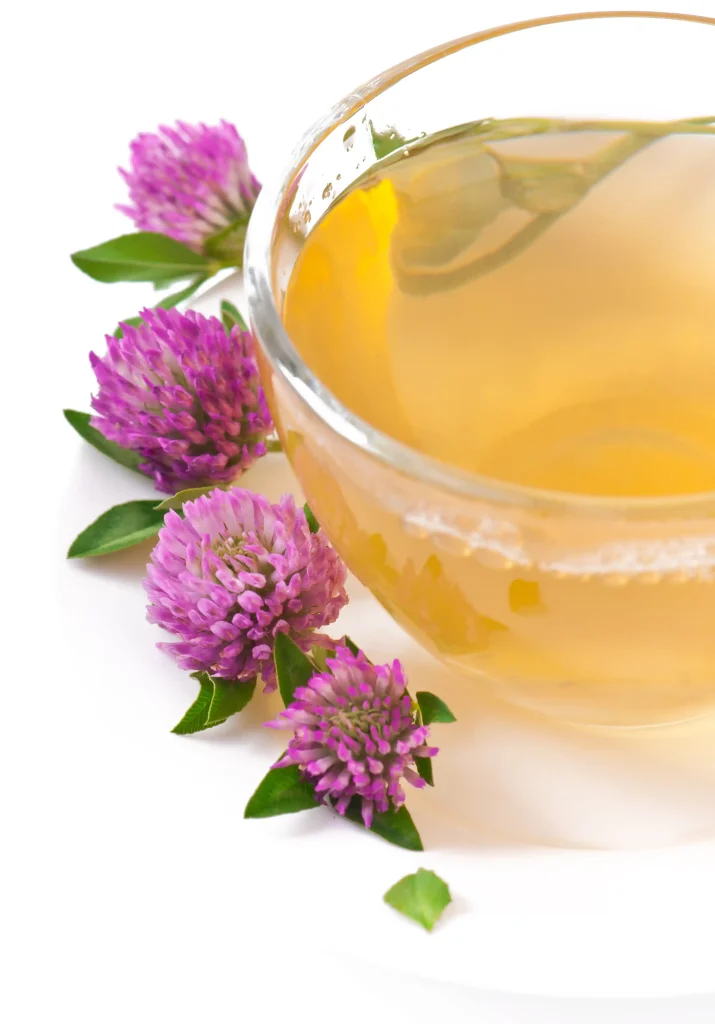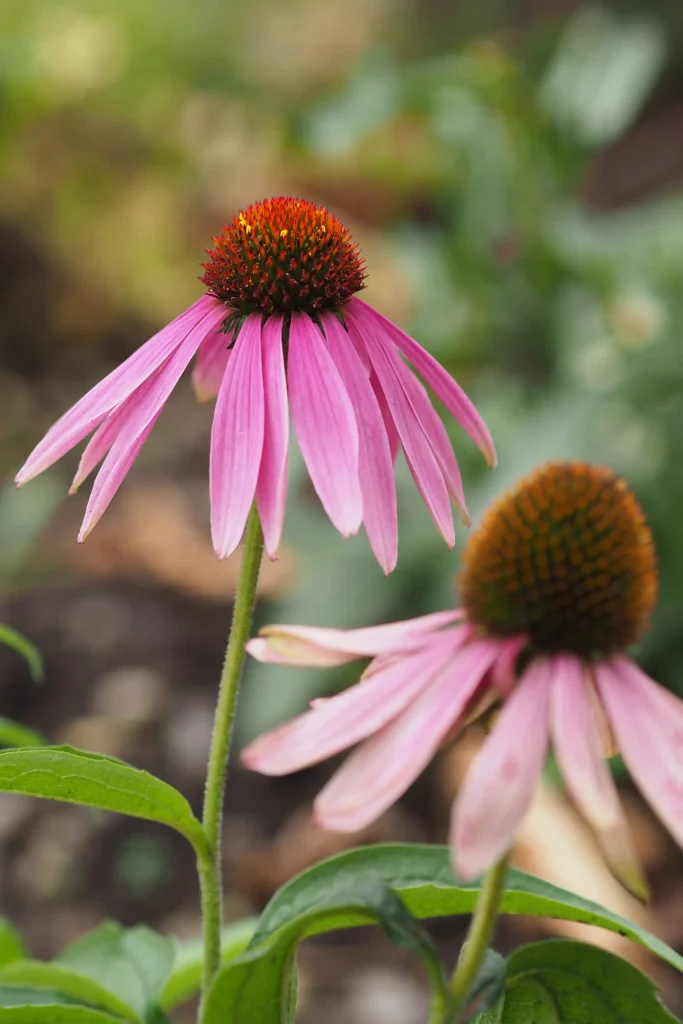Let me take you on a fascinating journey into the world of the echinacea plant, a remarkable herb that’s been capturing the attention of health enthusiasts and researchers alike. As someone who’s spent years exploring natural health solutions, I’ve developed a special appreciation for this purple beauty that does so much more than just brighten our gardens. The fascinating history of echinacea stretches back centuries, and its popularity continues to grow as modern science validates what traditional healers have known for generations. What makes this plant particularly intriguing is not just its therapeutic properties, but also its remarkable adaptability and resilience in various growing conditions, making it accessible to both commercial growers and home gardeners.

The Magic Behind the Purple Coneflower
The echinacea plant, often crowned with its distinctive purple petals, isn’t just another pretty face in your garden. This native North American perennial has been turning heads in the scientific community for its impressive immune-supporting properties. Remember the last time you felt under the weather? This might just become your new best friend. The plant’s remarkable ability to support immune function has been documented in numerous scientific studies, with researchers particularly interested in its unique combination of alkamides, polysaccharides, and flavonoids. These compounds work synergistically to create what many researchers believe is a more powerful effect than any single component could achieve alone. What’s particularly fascinating is how the plant developed these compounds as part of its own defense mechanism against environmental stressors, and now we can harness these same protective properties for our own wellness.
The story of echinacea begins in the rich soils of North America’s prairies, where Native American tribes first discovered its potential. Today, you’ll find the echinacea flower standing proudly in gardens worldwide, its cone-shaped center surrounded by delicate petals that seem to dance in the summer breeze. The traditional use of echinacea spans multiple indigenous cultures, each developing their own specific applications and preparation methods. These traditional practices have provided valuable insights for modern research, helping scientists understand not just how to use the plant, but also optimal harvesting times and processing methods to preserve its beneficial compounds. The plant’s journey from a prairie wildflower to a globally recognized health supplement is a testament to both its efficacy and the importance of preserving traditional knowledge.
From Garden to Medicine Cabinet: Growing Your Own Wellness
Have you ever wondered about growing your own medicinal garden? Starting with echinacea seeds might be your perfect entry point. These hardy plants aren’t fussy about soil conditions and actually thrive with minimal attention – perfect for those of us who weren’t blessed with a natural green thumb! What makes echinacea particularly appealing for home gardeners is its dual role as both an ornamental plant and a medicinal herb. The stunning flowers attract beneficial pollinators like butterflies and bees, contributing to garden biodiversity while providing you with a sustainable source of natural health support. Additionally, the plant’s deep root system helps prevent soil erosion and can improve soil structure over time, making it a valuable addition to any garden ecosystem.
The process of growing echinacea is surprisingly straightforward, yet understanding the nuances can significantly impact your success rate. When planting echinacea seeds, timing and preparation play crucial roles. The optimal planting time typically falls in early spring after the last frost, though some gardeners have success with fall planting in warmer climates. The seeds require a period of cold stratification, which naturally occurs over winter if fall-planted, or can be artificially created by storing seeds in moist sand in the refrigerator for 4-6 weeks before spring planting. This mimics the natural conditions these prairie natives evolved with, significantly improving germination rates from around 50% to potentially over 80%.
The Science Behind the Magic
Let’s dive deeper into what makes echinacea plant extract so special. The complexity of echinacea’s beneficial compounds has fascinated researchers for decades. Recent studies have identified over 400 individual phytochemicals in various parts of the plant, each contributing to its overall therapeutic effects. The primary active compounds include alkamides, polysaccharides, flavonoids, and essential oils, working in concert through multiple pathways to support immune function. Particularly interesting is the role of alkamides, which can stimulate the production of white blood cells while also modulating inflammatory responses. These compounds are most concentrated in the roots, which explains why traditional preparations often emphasized root extractions.
The extraction process is equally fascinating and crucial for preserving these beneficial compounds. Different methods yield varying concentrations of active ingredients, and recent advances in extraction technology have led to more efficient processes. Traditional alcohol-based echinacea extraction remains popular due to its ability to capture both water-soluble and fat-soluble compounds. However, modern supercritical CO2 extraction has gained attention for its ability to produce highly concentrated extracts without chemical residues. Water-based extractions, while gentler, primarily capture the water-soluble polysaccharides, which play a vital role in immune modulation.
Creating Your Own Echinacea Preparations
The question “Can I make coffee out of echinacea?” opens up an interesting discussion about home preparation methods. While not technically coffee, echinacea can be prepared into a variety of beneficial beverages. The taste profile is complex – earthy and slightly tingling due to the alkamides, with subtle floral notes from the aerial parts of the plant. This unique sensory experience actually serves as one indicator of potency, as the tingling sensation is associated with the presence of active alkamides. When preparing your own echinacea beverages, it’s important to consider which part of the plant you’re using, as each offers different benefits. The roots provide the highest concentration of immune-supporting compounds, while the flowers and leaves contribute additional antioxidants and other beneficial substances.
Beyond Basic Benefits: Advanced Applications
The versatility of echinacea extends far beyond its well-known immune support properties. Emerging research suggests potential benefits for skin health, with studies indicating that echinacea plant extract may help support collagen production and protect against environmental damage. The anti-inflammatory properties have also shown promise in supporting oral health, leading to its inclusion in some natural dental care products. Some researchers are even investigating its potential role in supporting mental well-being, as certain compounds in echinacea have been found to interact with the endocannabinoid system, which plays a role in mood regulation.
Quality Control and Selection
The growing popularity of echinacea has led to an abundance of products on the market, making quality assessment crucial. Professional herbalists and researchers recommend looking for several key indicators of quality in echinacea plant extract products. First, verify that the species used is clearly identified – Echinacea purpurea, E. angustifolia, and E. pallida each have slightly different compound profiles and traditional uses. Second, check for clear information about which plant parts are included and how they were processed. Third-party testing results should verify not just the identity of the species but also the presence and concentration of key compounds like alkamides. Additionally, organic certification can provide assurance about cultivation practices and the absence of pesticide residues.
Sustainable Cultivation and Environmental Impact
The growing demand for echinacea has raised important questions about sustainability and environmental stewardship. Commercial cultivation of the echinacea plant has expanded significantly, with annual global production now exceeding 50,000 metric tons. This scale of production necessitates careful consideration of agricultural practices and their environmental impact. Leading producers have implemented regenerative farming techniques that not only maintain soil health but actually improve it over time. These methods include minimal tillage, cover cropping, and crop rotation systems that help sequester carbon and enhance biodiversity. Additionally, because echinacea is naturally drought-resistant and adapts well to organic farming practices, its cultivation can serve as a model for sustainable medicinal herb production.
Research Frontiers and Future Potential
The scientific community’s interest in echinacea continues to evolve, with new research directions emerging regularly. Current studies are particularly focused on understanding the plant’s complex biochemistry and its potential applications beyond immune support. Researchers at several major universities are investigating how echinacea’s compounds might influence cellular stress responses and DNA repair mechanisms. One particularly exciting area of study involves the potential synergistic effects between echinacea plant extract and other medicinal herbs. Scientists are also exploring novel extraction technologies that might preserve previously unknown beneficial compounds. Early results suggest that certain extraction methods might enhance the bioavailability of key compounds by up to 40% compared to traditional methods.

Optimizing Usage for Maximum Benefits
Through extensive research and clinical observation, patterns have emerged regarding optimal echinacea usage. The timing of administration appears crucial – studies indicate that starting echinacea at the first sign of immune challenge can reduce duration and severity of symptoms by up to 30%. However, the benefits extend beyond acute usage. Regular, cyclical consumption may help maintain healthy immune function year-round. The key lies in understanding your body’s response and adjusting usage accordingly. For instance, some practitioners recommend a schedule of six weeks on followed by a two-week break, while others suggest using echinacea only during challenging seasons or periods of increased immune stress.
Understanding Safety Profiles and Interactions
While echinacea demonstrates an impressive safety profile, with over 60 years of documented modern use, it’s essential to understand potential interactions and contraindications. Research indicates that about 1% of users may experience mild allergic reactions, particularly those with sensitivity to plants in the Asteraceae family. Long-term safety studies spanning up to 12 months have shown no significant adverse effects when used as directed. However, individuals with autoimmune conditions should consult healthcare providers before use, as echinacea’s immune-modulating properties might theoretically interact with their condition or medications. Pregnancy and lactation safety studies have shown promising results, though more research is needed in these specific populations.
Building a Comprehensive Wellness Strategy
Incorporating echinacea into your wellness routine requires a thoughtful, holistic approach. The plant’s benefits are maximized when combined with other healthy lifestyle practices. Consider creating a seasonal wellness calendar that includes regular echinacea consumption during challenging periods, supported by adequate sleep, proper nutrition, and stress management techniques. Many practitioners recommend combining echinacea with complementary herbs like elderberry or astragalus for enhanced benefits. This integrated approach acknowledges that while echinacea is powerful on its own, its effects are amplified when part of a comprehensive wellness strategy.
Future Outlook and Industry Trends
The echinacea market is projected to continue its robust growth, with estimates suggesting a compound annual growth rate of 6.5% through 2026. This expansion is driven by increasing consumer awareness of natural health solutions and growing scientific validation of traditional uses. Innovation in the industry focuses on developing new delivery systems, including liposomal formulations that may enhance absorption and efficacy. Sustainable cultivation practices are becoming increasingly important, with many producers implementing vertical integration to ensure quality control from seed to final product. The future may also see the development of standardized echinacea extracts targeted for specific health applications, based on ongoing research into the plant’s various bioactive compounds.
Let me wrap up this comprehensive guide to echinacea with some final thoughts and practical recommendations.
Embracing Echinacea in Your Wellness Journey
The echinacea plant stands as a testament to nature’s profound ability to support human health. Through centuries of traditional use and decades of modern scientific validation, this remarkable herb has maintained its position as one of the most trusted natural wellness allies. The combination of its immune-supporting properties, ease of cultivation, and excellent safety profile makes it an accessible and valuable addition to any health-conscious individual’s toolkit.
As we’ve explored, the versatility of echinacea extends from the garden to the medicine cabinet, offering multiple ways to harness its benefits. Whether you choose to grow your own plants from echinacea seeds, prepare homemade extracts, or rely on high-quality commercial products, the key lies in understanding proper usage and maintaining consistent quality standards.
That while echinacea offers significant health-supporting properties, it works best as part of a comprehensive approach to wellness. By combining echinacea plant extract with other healthy lifestyle practices, you can maximize its benefits and support your overall health most effectively.
For those beginning their journey with echinacea, start with quality products from reputable sources, pay attention to your body’s response, and consider consulting with healthcare professionals for personalized guidance. Whether you’re growing your own echinacea flower or choosing from available supplements, this versatile plant offers a natural path to supporting your body’s inherent wellness capabilities.
The enduring popularity and growing scientific validation of echinacea remind us of the profound wisdom found in traditional plant medicine and its relevant place in modern healthcare practices.



